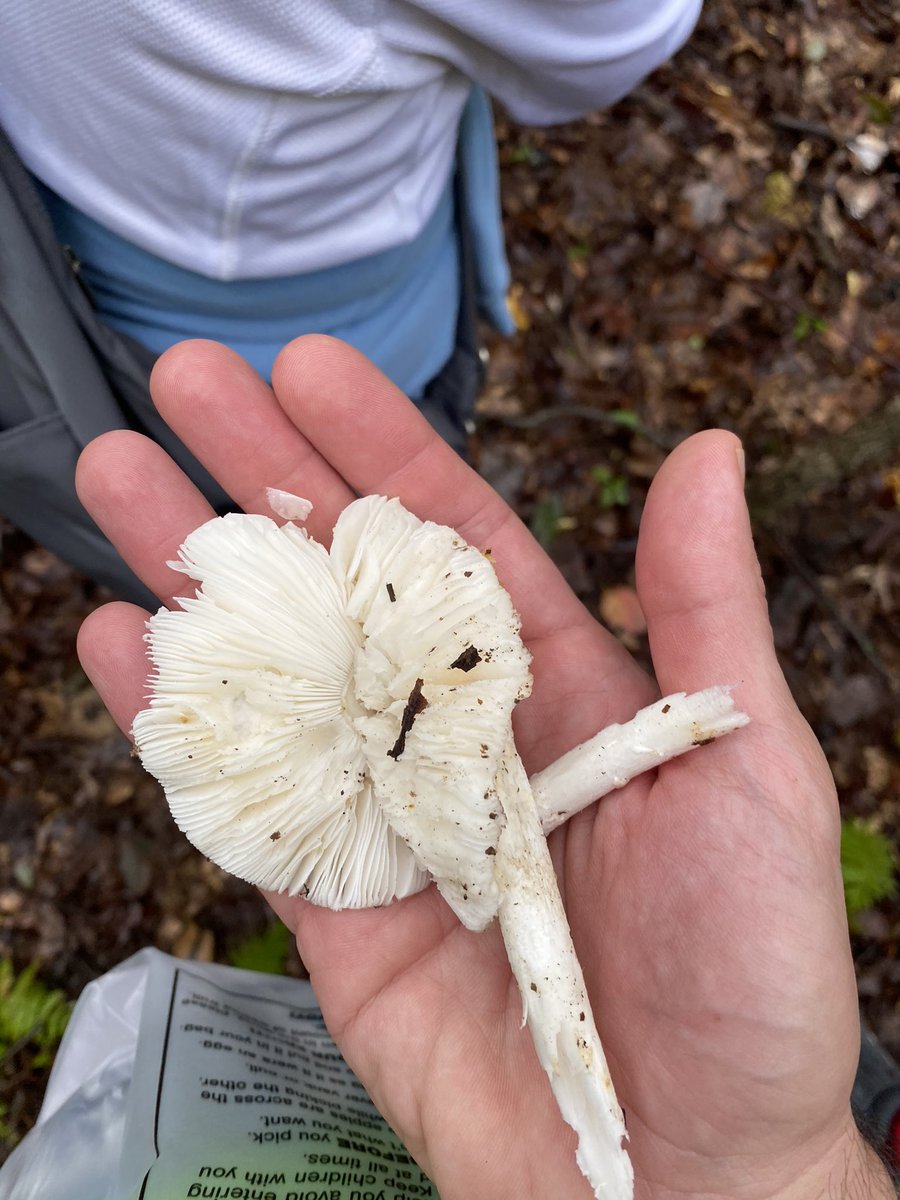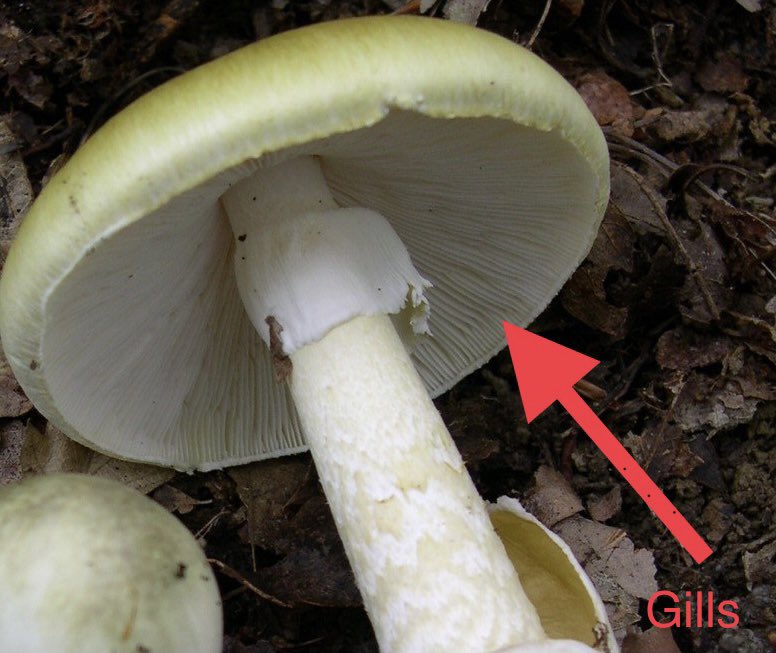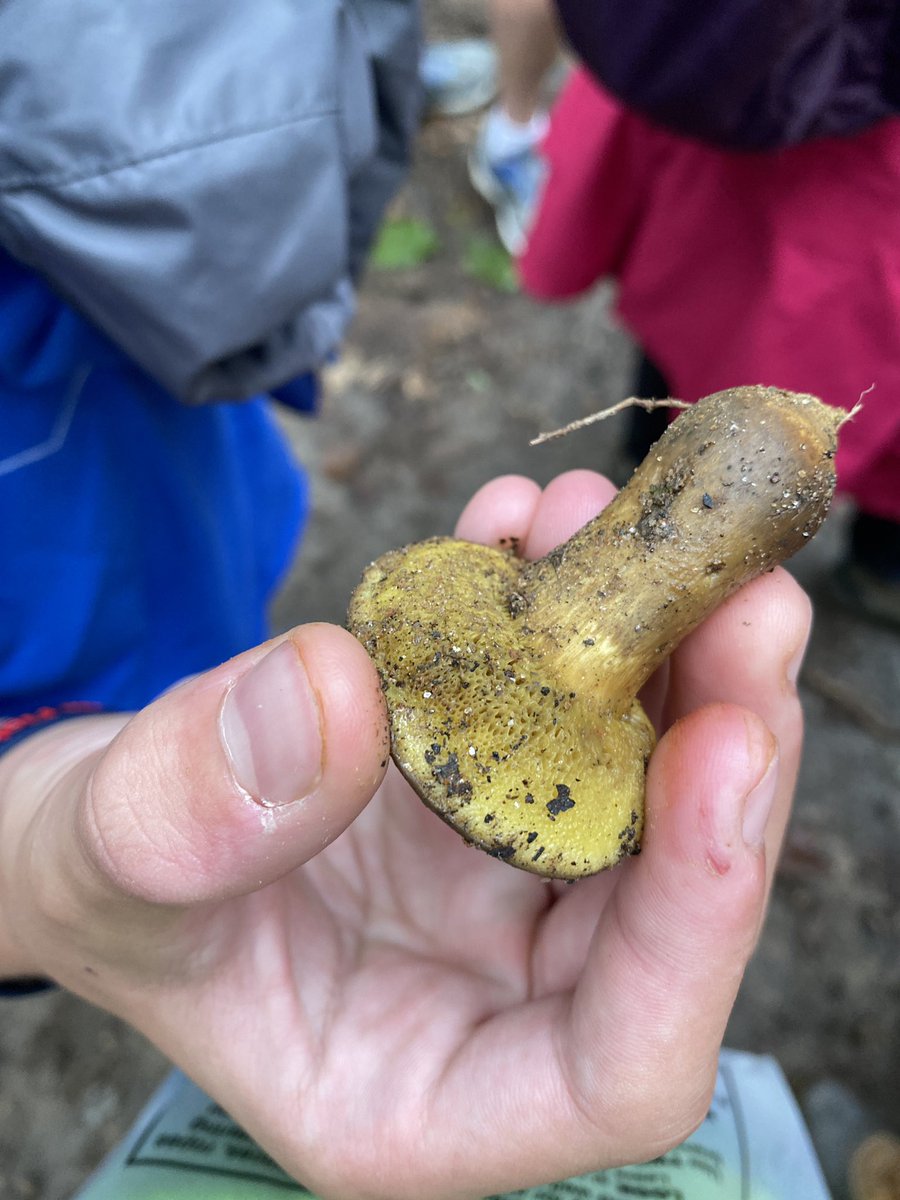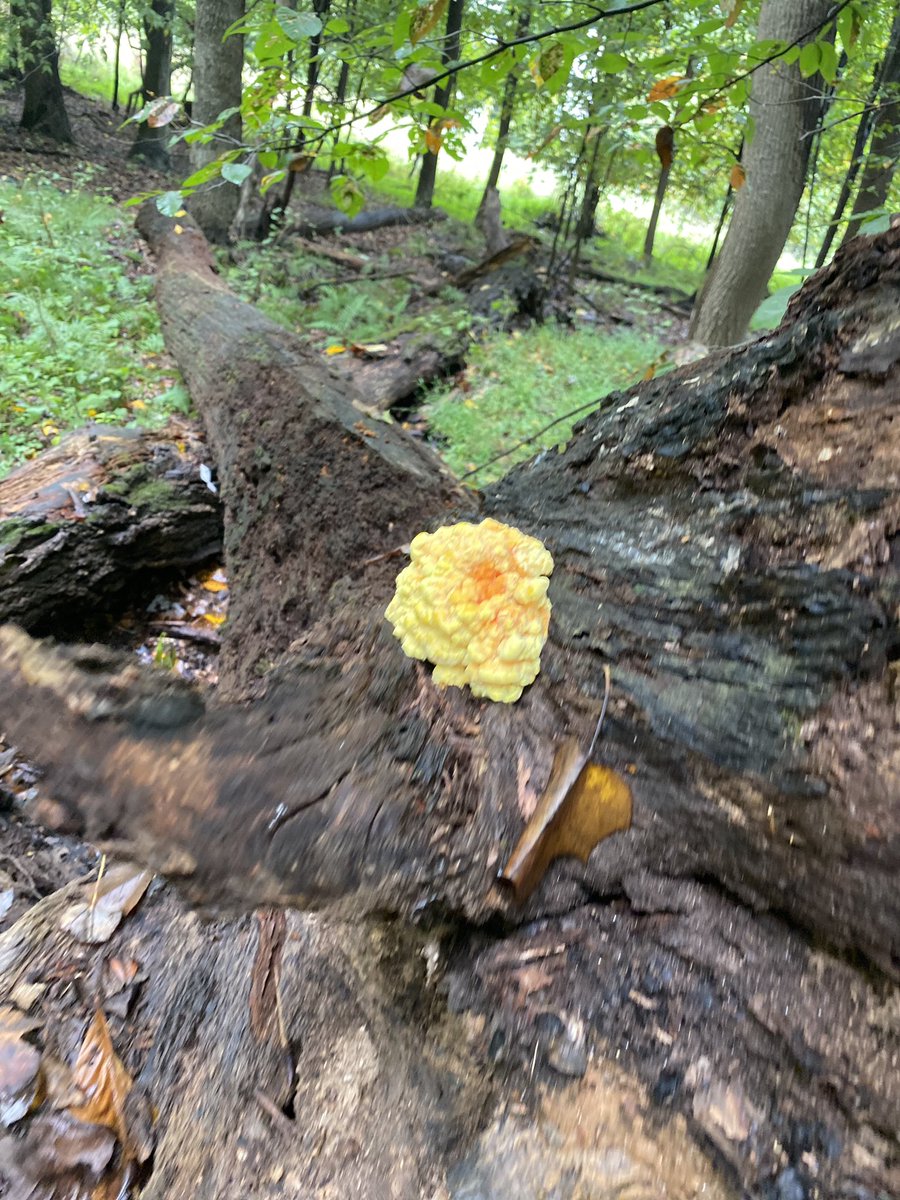My son and I went on a hike with a trained mushroom forager.
This is a crumbling Amanita phalloides, aka “death cap”.
The two main toxins are phalloidin, which causes diarrhea more than 5 hours after eating, and amanitin, which can cause liver failure and death days later.
1/x
This is a crumbling Amanita phalloides, aka “death cap”.
The two main toxins are phalloidin, which causes diarrhea more than 5 hours after eating, and amanitin, which can cause liver failure and death days later.
1/x
Amanitin works by interfering with RNA polymerase, which stops protein production. There aren’t great treatments.
The forager said gilled mushrooms on trees are generally edible and those on the ground are usually bad, but only EAT A MUSHROOM IF YOU KNOW EXACTLY WHAT IT IS.
2/x
The forager said gilled mushrooms on trees are generally edible and those on the ground are usually bad, but only EAT A MUSHROOM IF YOU KNOW EXACTLY WHAT IT IS.
2/x
This is a Bolete mushroom. The bottom is spongy, without gills. The forager thought this one was edible, although not particularly tasty.
3/x
3/x
We also found this puffball. When you see the spores come out, you know why it’s called that.
4/x
4/x
We were told this is an immature “chicken mushroom,” and it would taste really good in a few days when it was more orange. 5/x
To find interesting mushrooms in the woods, look for mature hardwood trees on an incline and then see where the water beneath them would run. The mushrooms tend to congregate where it is damp.
6/x
6/x
General rules:
1) Store-bought mushrooms are safe
2) Wild mushrooms can kill you
3) Don’t eat it if you aren’t sure
4) All wild mushrooms must be cooked (but even cooked mushrooms can kill you because heat doesn’t inactivate all the toxins)
7/x
1) Store-bought mushrooms are safe
2) Wild mushrooms can kill you
3) Don’t eat it if you aren’t sure
4) All wild mushrooms must be cooked (but even cooked mushrooms can kill you because heat doesn’t inactivate all the toxins)
7/x
If you are near Baltimore, this restaurant - “Foraged”- serves yummy, safe, locally foraged food.
Check it out.
8/8 https://www.foragedeatery.com"> https://www.foragedeatery.com
Check it out.
8/8 https://www.foragedeatery.com"> https://www.foragedeatery.com

 Read on Twitter
Read on Twitter





